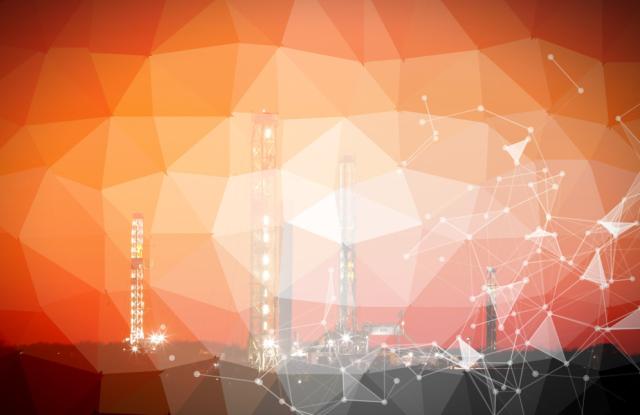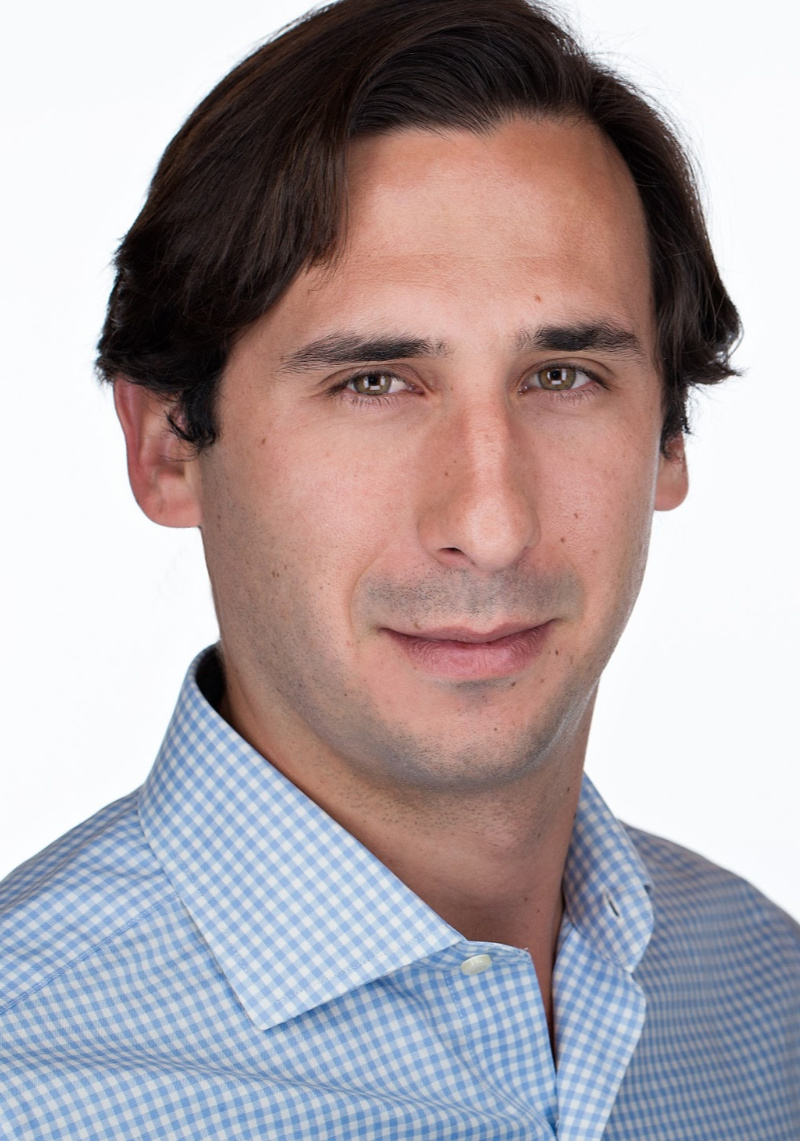
(Source: Hart Energy/Shutterstock.com)
[Editor's note: A version of this story appears in the January 2020 edition of Oil and Gas Investor. Subscribe to the magazine here.]
Financial markets have proven adept at creating markets for asset-backed securities. An individual auto loan may lack appeal, for example, but a highly diversified package of auto loans may be attractive, assuming it is appropriately collateralized and offers a competitive yield. Diversification lowers the risk of individual loans, allowing a loan package to be rated by a respected rating agency.
Now something similar has been developed in the energy area. Using proprietary software and machine learning models, working interests in wellbores are being packaged together to garner an investment grade rating. The highly diversified pools are collateralized by interests across multiple basins and throw off a yield—in certain cases approaching 6%—that institutional investors have found attractive.

a larger industry
in the U.S. that
has not tapped
this form of
financing”, said
Jeremy Cook,
Raisa Energy
LLC CFO. “We
think this deal is
potentially the tip
of the iceberg.”
The move to securitize energy interests is seen by some as a key first step. Historically, interests in oil and gas have been highly fractionalized with few options for liquidity. But now, sometimes small, nonoperated working interest holders are being connected with institutional investors and vice versa, according to Raisa Energy LLC, the sponsor of a new class of asset-backed securities.
Connecting two markets
“We set up Raisa with the thought that a nonoperated working interest holder in oil and gas wells has historically had a very difficult time getting tied into the institutional investor market,” Raisa CFO Jeremy Cook told Oil and Gas Investor. “We’re basically connecting the two markets together by aggregating all these nonop interests and getting them to an end-point of institutional capital.”
To date, Raisa’s first securitization deal involves some 700 wellbores in five states: Texas, North Dakota, Colorado, Wyoming and Oklahoma. The wells are operated by 35 different producers, with no single well representing more than 1% of the total package of wells. Operations are spread throughout some 20 counties in five basins, lowering possible risk from concentrated, single-basin operations.
“Diversification is absolutely critical in working with the rating agencies to get a transaction done,” observed Cook. “It is the diversity of those wells that allows for the variance of the results to be low enough to make it investment grade.”
Raisa’s initial securitization, he noted, earned investment grade ratings from two rating agencies, including one of the major rating agencies.
Institutions searching for yield
“There is big institutional money that is searching for yield,” commented Cook. “There was tremendous excitement and appetite from institutional investors for the investment grade piece. And there was also a lot of interest on a smaller, sub-investment grade piece [rated BB+, BB-] from other parties, including hedge funds and other investors.”
While Raisa did not specify the coupon on its initial securitization, it was “commensurate” with yields of instruments with a similar investment grade rating, it said. A coupon of “nearly 6%” was cited by The Wall Street Journal in a recent article.
Raisa has structured the issuance of its bonds, or asset-backed securities, by way of an SPV, or special purpose vehicle. Raisa retained its ownership in the acreage but sold the wellbore interests to the SPV—some 700 wellbores in the most recent issuance—as collateral for the bonds, based on an audited reserve report using a present value analysis (PV-10 discount rate).
“A producing wellbore is a stream of cash flows,” observed Cook. “A wellbore has its own unique factors and variables, but at the end of the day it’s simply a stream of cash flows. And by pulling 700 unique and distinct individual cash flows, you’re able to lower the variance in order to achieve an investment grade rating, which is critical to this transaction.”
Hedging against price risk
Two potential risks to the strategy—commodity price risk and production risk—are addressed by Cook.
Given that production from unconventional wells is heavily front-end weighted, hedging has been a “key component in offsetting price risk, so you’re able to hedge a good portion of those cash flows,” said Cook. As for risk to production, the latter “is meaningfully mitigated by the large diversification of the pool of assets that we put into the securitization.”
As production is heavily weighted to the early years of unconventional wells—albeit with accompanying steep decline rates—the heavy cash flow early in the well life is used to make proportionately large contributions to amortization, noted Cook. In other words, the amortization schedule mirrors the profile of the cash flows in being heavily front-end weighted.

learning, I can
grab all that
data to give
me a better
understanding
as to how I’ve
invested in the
past or how I
can invest in the
future”, said Luis
Rodriguez, CEO
and founder of
Raisa Energy LLC.
As regards potential parent-child well interference, the vast majority of wells in which Raisa holds interests have been pad developed, or will be pad developed, implying a limited impact from so-called frack hits from wells being drilled near or around a prescribed development area. In essence, the inner wells of the pad have minimal issues because they have typically already been co-developed.
The ‘tip of the iceberg’?
In terms of growth prospects, Cook is optimistic about asset-backed securitization taking off in energy. “I can’t think of a larger industry in the U.S. that has not tapped this form of financing,” he said. “We think this deal is potentially the tip of the iceberg. Just consider the scale that this financing can bring to the market. Even if production is valued at a modest $30,000 per flowing barrel per day, if you do the rough mathematics, the potential market in the U.S. is massive.”
The launching of asset-backed securitization in energy may also be highly timely in that “the shale business is transitioning from a venture-growth model to a manufacturing mode,” observed Cook. In addition, asset-backed securitization is not subject to the sometimes volatile swings experienced in the semi-annual redeterminations of reserve-based lending, he added.
For Raisa, securitization of its nonoperated wellbore interests allows the company discretion over the use of the funds, making it possible to “give distributions back to our investors and also continue to grow its business over time,” according to Cook. Proceeds from the offering are available to Raisa with limited restrictions, while Raisa also retains potential revenues generated from the tail-end of production once amortization of the debt is complete.
Mitigating single-basin risk
For Raisa, one possible avenue for expansion is combining assets with other producers, including private-equity (PE)-backed sponsors looking for an exit from a single basin.
“If you’re a PE-backed operator or nonop in a single basin, being able to tap asset-backed securitization is probably more challenged, because of single-basin risk,” said Cook. “We potentially have the ability to combine that type of production with our production and, being more diversified, offer more avenues for other E&Ps to access this market.”
A near-term goal of Raisa is to issue asset-backed securities on a “systematic” basis, according to Cook.
“We’ll probably have at least one or two additional securitizations that are planned for 2020,” he said. “As groups of wells come online and mature and reach an appropriate scale and diversification, we’re planning to continue to create SPVs, to continue to access the market and continue to effectively drop down these assets into what is a more efficient form of financing.”
SIDEBAR:
The Growth Of Raisa Energy
Raisa was founded in October of 2014 as an independent E&P based in Denver that creates value principally by owning nonoperated working interests in basins across North America. The company is led by CEO and founder Luis Rodriguez and has some 60 employees specializing in disciplines such as data science, software engineering, geology, mapping, land and accounting.
Originally from Venezuela, Rodriguez’s career includes work at Exxon Mobil Corp. and, later in the U.S., for Schlumberger Ltd. After earning an MBA from Stanford University, he joined Brigham Resources LLC, focusing on mineral activities. After founding Raisa, Rodriguez was joined by Ayman Kaheel, whose prior career experience includes work at Yahoo, Amazon, IBM and Microsoft.
An interesting element of Raisa is that its data science and software engineering department, with some 30 professionals, is based in Cairo, Egypt. The costs of an overseas office “are a lot lower, but the quality of the data scientists and software engineers is comparable to the U.S.,” said Rodriguez. Importantly, the ability to process transactions across five basins is “very fast.”
The underlying thesis for Raisa in its early days was that, if much of the core acreage had already been captured in key basins, an alternative strategy was to aggregate “fractionalized assets.” Typically, these are nonoperated interests that can often be acquired. And, once such an interest is acquired, “you’re able to gain all the information that you would as an operating partner,” noted Rodriguez.
“If you’re able to buy all these little pieces—so you’re diversified across a variety of wells—then you can true up a diversified asset and, in turn, have a financial asset,” said Rodriquez. “Then consider the data those assets can yield. With machine learning, I can grab all that data to give me a better understanding as to how I’ve invested in the past or how I can invest in the future,” he continued.
“That was the crux of what Raisa was set up to do.”
Others apparently liked the direction Raisa was taking. EnCap Investments LP made an unspecified equity commitment to Raisa in April of 2016, markedly accelerating the pace of its growth.
Raisa describes taking a “scalpel approach” in its search to find the best rock under the best operators.
As Raisa makes acquisitions of nonoperated interests, it gains proprietary data not generally available to public markets. The data goes into proprietary software and machine learning or artificial intelligence models, said Rodriguez, allowing Raisa to “better identify the next acquisition. Small pieces lead to more data and more wells for a better price. It creates a virtuous cycle.”
In turn, for every dollar that is spent on leasing, Raisa typically may invest roughly $10 on drilling upon receipt of an authorization for expenditure (AFE) to participate in a new well. And with pad drilling often the norm, the AFE will increasingly call for participating in multiple wells rather than a single well.
“A well is drilled, completed, flows back, goes online and then is producing. And we start receiving checks,” said Rodriguez. “We’ve effectively done that more than 700 times now.”
Recommended Reading
TPH: Lower 48 to Shed Rigs Through 3Q Before Gas Plays Rebound
2024-03-13 - TPH&Co. analysis shows the Permian Basin will lose rigs near term, but as activity in gassy plays ticks up later this year, the Permian may be headed towards muted activity into 2025.
US Drillers Add Most Oil, Gas Rigs in a Week Since September
2024-03-15 - The oil and gas rig count, an early indicator of future output, rose by seven to 629 in the week to March 15.
US Drillers Add Most Oil Rigs in a Week Since November
2024-02-23 - The oil and gas rig count rose by five to 626 in the week to Feb. 23
US Drillers Add Oil, Gas Rigs for Third Time in Four Weeks
2024-02-09 - Despite this week's rig increase, Baker Hughes said the total count was still down 138 rigs, or 18%, below this time last year.
US Drillers Cut Oil, Gas Rigs for First Time in Three Weeks
2024-02-02 - Baker Hughes said U.S. oil rigs held steady at 499 this week, while gas rigs fell by two to 117.

